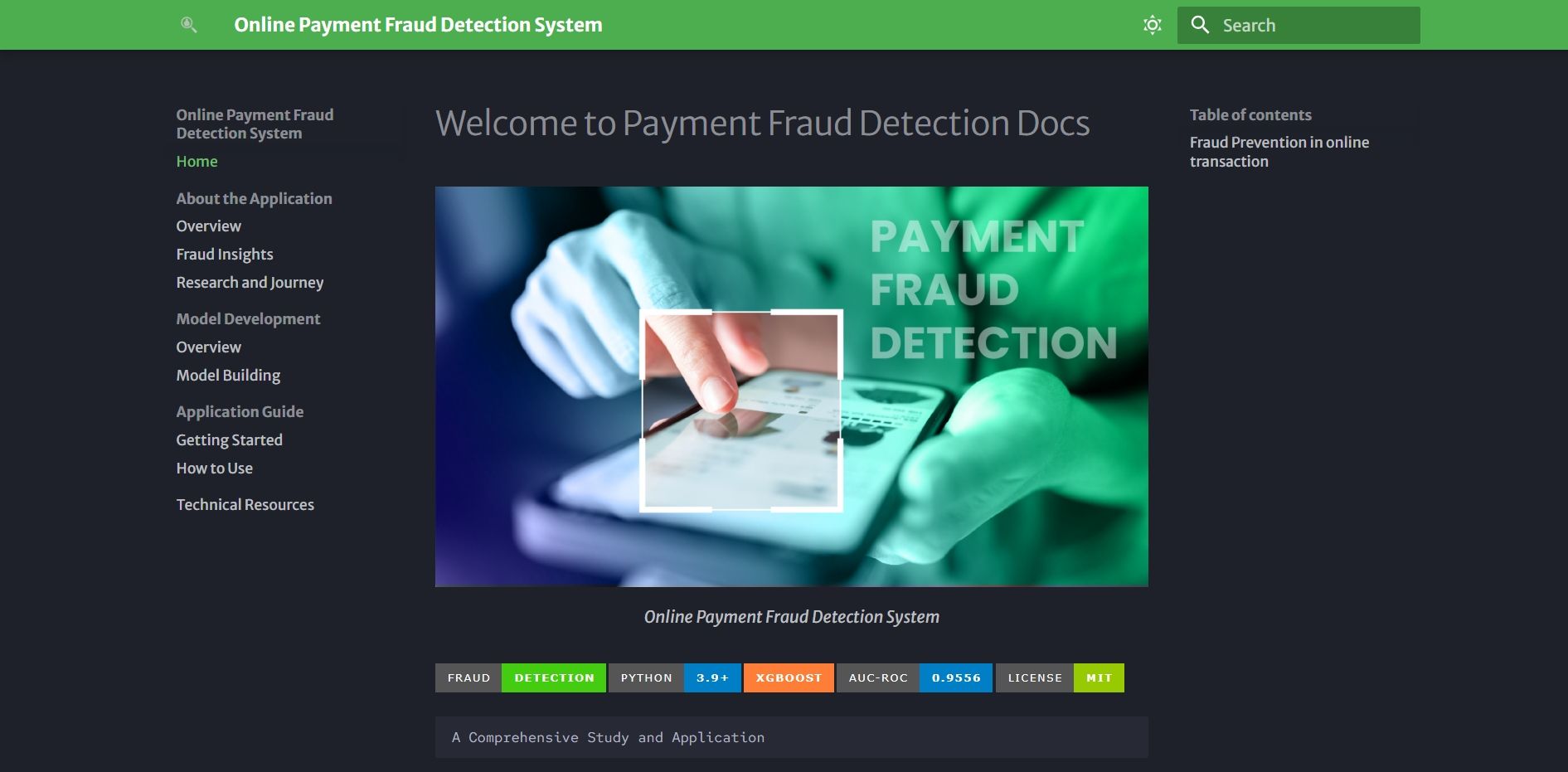
Welcome to Online Payment Fraud Detection Application
An advanced machine learning-powered application designed to detect fraudulent activities in online payments, ensuring secure transactions and enhanced user trust.
The Online Payment Fraud Detection Application leverages cutting-edge machine learning techniques, including Principal Component Analysis (PCA) and XGBoost, to offer accurate fraud predictions. By reducing the number of input features through dimensionality reduction, the application provides a streamlined user experience without compromising accuracy.
Introduction
In the modern digital world, online payment systems have become an integral part of daily transactions. However, with the rise in digital payments, there has also been an alarming increase in fraudulent activities. Fraudsters are constantly finding new ways to exploit vulnerabilities, making it crucial for businesses to implement robust fraud detection systems. This is where machine learning-powered applications come in, helping detect anomalies and preventing fraudulent activities before they cause harm.
Fraud Detection Insights and Key Patterns
Understanding fraud patterns is crucial for identifying and preventing fraudulent transactions. By analyzing transaction data, we can uncover several key insights that help pinpoint suspicious activities:
- Transaction Amount Analysis: Fraudulent transactions often involve unusually large amounts or low-value transactions used to test stolen card details.
- Geographic Discrepancies: Fraudulent activities may originate from unexpected locations or IP addresses that don’t match the user’s stated location.
- Frequency of Transactions: Multiple rapid transactions or repeated declines followed by successful attempts can indicate fraud.
- Time-Based Transactions: Fraud often occurs in specific patterns, such as rapid transactions within short intervals or long-term repetition spread over time.
Fraud Trends Over Time: By tracking fraud patterns year-on-year, the system adapts to new fraud tactics, ensuring continuous protection.
In conclusion, analyzing fraud insights provides actionable intelligence, allowing systems to stay ahead of emerging fraud tactics through data-driven approaches and machine learning models.

Key Features
- Real-Time Fraud Detection: Predict fraudulent transactions using machine learning models trained on the IEEE-CIS Fraud Detection dataset.
- Comprehensive Analysis: Analyze transaction amounts, customer behavior, and geographical patterns to uncover fraud.
- Scalability: The model is designed to scale efficiently for large transaction datasets.
Technologies Used
- Machine Learning: XGBoost, Logistic Regression, Random Forest, Neural Networks
- Data Preprocessing: Handling imbalanced data, feature engineering, missing values, and scaling
- Deployment: Streamlit for interactive UI and API-based deployment
How It Works
This project leverages advanced machine learning algorithms to detect fraud in online transactions. The models are trained on real-world transaction data from the IEEE-CIS Fraud Detection Dataset, allowing the system to detect unusual patterns, such as high transaction amounts, geographic discrepancies, and rapid transaction frequency, that could signal fraud.
Explore the Project:
- Live Demo: Try the fraud detection system in action using the Streamlit App . Enter transaction details, and the app will predict whether they are fraudulent or legitimate in real-time.
- Project Documentation: For a detailed explanation of the project, how it works, and how to implement it, check out the full Documentation .
By integrating machine learning models with real-time transaction data, this project helps businesses minimize the risks associated with fraudulent payments.